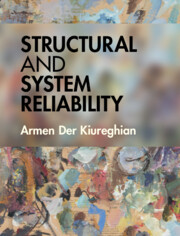This paper is devoted to a model which has applications in the study of reliability, extinction of species, inventory depletion, and urn sampling, among others. A series–parallel system consists of (k + 1) subsystems C0, C1, · · ·, Ck, also called cut sets. Cut set Ci contains ni components arranged in parallel, i = 0, 1, · · ·, k. No two cut sets have a component in common. It is assumed that after t components have failed, each of the remaining components is equally likely to fail, t = 0, 1, · · ·. It is also assumed that the components fail one at a time. In Part 1 of this paper we study the probability that the system fails because a specified cut set C0, say, fails first. We obtain several alternative expressions and recurrence relations for this probability. Some of these formulae are useful for computation, while others permit us to derive qualitative features such as monotonicity, Schur-concavity, asymptotic limits, etc. These results are extended to cover the case in which some cut set first drops to level a, where a is a specified positive integer. In Part 2, we compute the probability distribution, frequency function, and failure rate of the lifelengths of series–parallel systems. We also obtain corresponding recurrence relations and finite and asymptotic properties.


